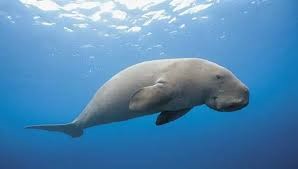7667766266
enquiry@shankarias.in
Prelims: Current events of national and international importance | Conservation
Why in news?
The International Union for Conservation of Nature (IUCN) World Conservation Congress 2025 in Abu Dhabi, has formally adopted a motion recognizing India’s first Dugong Conservation Reserve in Palk Bay, India.
Dugong (Sea Cow)

References